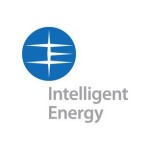Scenario to Explore: Micro Fuel cells finally hit mainstream news cycle in 2022 when everyone at Burning Man sings their praises as reliable sources of electricity. By 2025 the industry debate over recharging (battery) vs refueling (fuel cells) for electronic devices shifts tone as global manufacturers cut the cord from the grid and embed micro fuel cells insider everything from laptops to floor lamps. Even in 2025 most people are still unclear how fuel cells work and how they are different but batteries but they celebrate cutting the cord and embrace the design, performance and convenience of refueling devices.
Elon Musk tries to deter the enthusiasm for micro fuel cells and doubles down on his rhetoric with batteries and his dismissive language of ‘Fool Cells’. By late 2020s governments and industry leaders around the world go all in with portable fuels and fuel conversion devices. Looking back we can thank Intelligent Energy for being clear about the vision.
Integrating a Power Plant Inside our Devices?
Yes there is Hype ahead but this is a Game-Changer
Meeting Consumer Demand for Performance, Convenience and Design:
Around the globe, the most important energy storage demand application is mobile power (not home storage or grid level storage). In this embedded fuel cell scenario you can cut the cord of electricity based devices from phones, laptops, tablets, toasters, vacuum cleaners, floor lamps, irons, toys, washer-dryers, et al.
Scaling Global Energy Access via Portable Fuels:
Think of energy as a retail shelf strategy. You can scale production and distribution of energy access to retail shelves with portable fuel sticks (or packets) of hydrogen (or hydrogen-rich fuels) and portable fuel cells that convert fuel into electricity.
Paying Attention to Intelligent Energy
If we arrive at this future, we might look back and thank UK’s Intelligent Energy for pushing the vision of putting fuel cells inside devices (not just using them to recharge batteries).
Intelligent Energy is well known within the fuel cell industry but gained more mainstream exposure through headlines of a prototype iPhone that would only need to be refueled once a week.
A long-time innovator in the industry, Intelligent Energy has commercial solutions for distributed power (stationary), transportation (scooters, cars, aerial) and portable power.
In this post, let’s focus on the more nascent market of portable power and a more radical evolution of its portable UPP fuel cell charging system. (Catch up w/ past post on micro fuel cell companies).
Rather than think of UPP as an external charger for batteries, the company is now public about its strategy to embed fuel cells inside consumer products such as laptops and smart phones.
In a recent Bloomberg video interview Mark Lawson-Statham speaks clearly about ‘the journey’ is in embedding fuel cells inside devices (not as external chargers) and capturing a ‘$300B market’ in portable power.
How do we get there?
Take this UPP product (fuel cartridge and fuel cell) – cut costs, shrink it and embed it inside the device itself.
In this image one person is tied to the grid (recharinging his battery) The other is mobile and free using the current evolution of micro fuel cells as a recharger.
The next image will be a person inserting a fuel stick inside their device to refuel the embedded fuel cell.
Bringing the Scenario to Life
What are radical news headlines we might see on embedded fuel cells inside electronics?
September 2019
Intelligent Energy + Apple announce: Unplug Your Laptops
The rumors of an Apple fuel cell turned out to be true. In 2019 Apple CEO Ashton Kutcher announces an end to plugging into wall sockets. Apple will be selling power packets to the world. Utility stocks fall as Apple becomes fuel company.
June 2020
China’s New Five-Year Plan Includes Dominating Fuel Cell Market
Chinese entrepreneurs scale up fuel cell production as it sees global supply chains transforming in the decades ahead.
November 2022
Time Magazaine cover = ‘Cordless Christmas’
Manufacturers embrace breaking the cord. Holiday season full of products that have fuel cells embedded inside. Intelligent Energy signs contracts with Dyson and Kitchenaide. Panasonic and Samsung help other brands bring embedded fuel cell solutions into their products.
October 2025
Texas Announces House Permit without Wall Sockets
To reduce costs of construction, homes can now be built in Texas without typical wall sockets as customers refuel more products. Only electrical wiring is for ceiling and appliance connections.
April 2030
Walmart Becomes Nation’s #1 Fuel Seller
Walmart captures upside to growth as consumers now purchase 30% of their family’s energy needs in the form of portable fuel packets.
“Garry you are a terrible Futurist who knows nothing about energy markets”
Arguments against Portable Fuel Revolution?
Argument #1: Energy losses:
A skeptic would argue that hydrogen production and distribution leads to unacceptable losses in energy transfer.(My short counter: Energy losses are acceptable trade offs. In fact, energy loses are natural part of industrial life. Today’s world = combustion engine cars are 40% efficient. More than 50% of energy inputs are lost in getting electricity to us now. The entire food chain is one gigantic energy sink hole. Energy losses can be lessened as nanostructured catalysts improve and solid state storage systems (via adsorption) mature as parts of the hydrogen supply chain.)
Argument #2: Electrons vs ‘Mass’ of Molecules
Some argue ‘I’d rather transport energy via (massless) electrons than have molecule fuels to produce and distribute around the globe.(My short counter: You cannot escape mass as medium for delivering electricity. Electrons don’t have mass but the copper wires and steel infrastructure to transport electricity does have mass. Solar cells have mass. Batteries have mass. What business models show us is that mass-based markets can work. Portable fuels like gasoline and natural gas are more profitable than electricity utilities. My lens is treat hydrogen (or H2 rich fuels) like milk or bottled water. Embrace mass as a format that sustains scaling up a new form of delivering electricity to the world)
Argument #3: Public Sentiment has Shifted to Batteries. (Or the “You don’t have Elon Musk” Argument)
There is only one Elon Musk and I wish he would come around! I am not concerned with current sentiment. Batteries are our only option and far from an ideal energy storage platform compared to molecule fuels.
Argument #4: People are used to recharing and won’t ‘refuel’
People are now used to plugging in. Why make them change again? Refueling sounds a lot like good old days when we used to buy batteries instead of recharging them! But fuel cartridges are different than stored charges inside a battery. When people realize they only need to refuel once a week or month or year for certain devices– adoption will speed up. Nobody enjoys the battery paradigm today. We struggle to find wall sockets in cafes and airports. We hate it when we realize that our battery is almost dead. I am not concerned about consumer behavior shifting to a refueling model.
Learn More: Videos
This is early generation fuel cell ‘recharger’ designed to provide auxilary power to battery powered devices. Who buys this? Campers, business travelers and early adopters of latest gadget. Rather than get fixated on this current iteration of a bulky handheld fuel cells — imagine it is like the 1980s cell phone compared to the thin supercomputer that sits in your pocket.
Demonstration



